



Sir Gamesalot
gamer level 7
18412 xp
18412 xp
followers
50
50
Use my invite URL to register (this will give me kudos)
https://boardgaming.com/register/?invited_by=yoda844
profile badges




recent achievements

Count / Countess
Gain 50 total followers
Gain 50 total followers

Veteran Grader
Grade 800 more reviews or tips by clicking "Yes" or "No" in response to the question "Was this helpful?"
Grade 800 more reviews or tips by clicking "Yes" or "No" in response to the question "Was this helpful?"

Explorer - Level 5
Earn Explorer XP to level up by completing Explorer Quests!
Earn Explorer XP to level up by completing Explorer Quests!

Mask of Agamemnon
Explore select games by completing a series of exploration actions. learn more »
Explore select games by completing a series of exploration actions. learn more »
Player Stats
Critic (lvl 2)
515 xp
515 xp
Explorer (lvl 5)
3422 xp
3422 xp
Professor (lvl 3)
983 xp
983 xp
Reporter (lvl 3)
1341 xp
1341 xp
About Me
A board gaming enthusiast at heart, I also play AD&D on a regular basis.
I prefer games that move quickly; have elegant, simple, and unique mechanics; require both strategy and a bit of luck; and are cooperative, when possible. I also learn more towards the sci-fi, horror, and fantasy game genres.
My game library is ever-growing in my effort to find the best casual, family, light strategy, and themed games possible.
I first really got into gaming while attending Origins Game Fair. My passion for board gaming has only increased since that time. My mission is to spread the joy of gaming to as many people as possible. I always bring a large selection of games to gatherings in the hopes that I can get people to play something. I feel board games are a great way to bond and get to know others without the need to have much in common. I help organize a gaming convention that takes places in the Kansas City area called KantCon, which runs every July.
Most recently I've played Zombicide, Takenoko, Smash Up, The Adventurers (Temple of Chac and Pyramid of Horus), Sentinels of the Multiverse, Agents of S.M.E.R.S.H., Undermining, Galaxy Trucker, Betrayal at House on the Hill, Legendary, and Shadows Over Camelot.
My all-time favorite board game is a rare one: Thunder Hamsters and the Temple of Cheese. It combines luck, story-telling, cheesy humor, and RPG elements into one fun-filled package. I recommend it to anyone that loves the idea of a relatively unpredictable and light-hearted game that can move in nearly ANY direction and rewards creativity.
As a general rule, if you follow me, I will follow you as long as I have room. I will also read and rate your reviews, tips, etc. It's win-win for both of us. My e-mail is yoda844@hotmail.com if you want to contact me.
I prefer games that move quickly; have elegant, simple, and unique mechanics; require both strategy and a bit of luck; and are cooperative, when possible. I also learn more towards the sci-fi, horror, and fantasy game genres.
My game library is ever-growing in my effort to find the best casual, family, light strategy, and themed games possible.
I first really got into gaming while attending Origins Game Fair. My passion for board gaming has only increased since that time. My mission is to spread the joy of gaming to as many people as possible. I always bring a large selection of games to gatherings in the hopes that I can get people to play something. I feel board games are a great way to bond and get to know others without the need to have much in common. I help organize a gaming convention that takes places in the Kansas City area called KantCon, which runs every July.
Most recently I've played Zombicide, Takenoko, Smash Up, The Adventurers (Temple of Chac and Pyramid of Horus), Sentinels of the Multiverse, Agents of S.M.E.R.S.H., Undermining, Galaxy Trucker, Betrayal at House on the Hill, Legendary, and Shadows Over Camelot.
My all-time favorite board game is a rare one: Thunder Hamsters and the Temple of Cheese. It combines luck, story-telling, cheesy humor, and RPG elements into one fun-filled package. I recommend it to anyone that loves the idea of a relatively unpredictable and light-hearted game that can move in nearly ANY direction and rewards creativity.
As a general rule, if you follow me, I will follow you as long as I have room. I will also read and rate your reviews, tips, etc. It's win-win for both of us. My e-mail is yoda844@hotmail.com if you want to contact me.



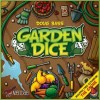













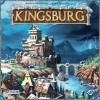

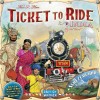

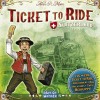
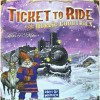


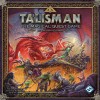
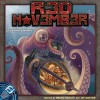






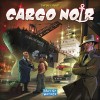
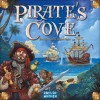
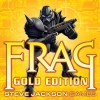






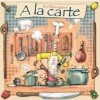






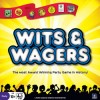










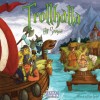




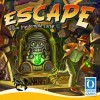




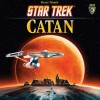




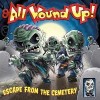







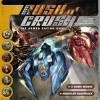




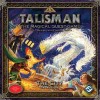





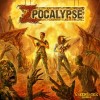




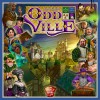



















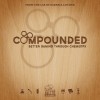


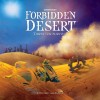





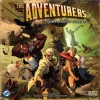
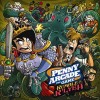



![Go to the Level 7 [escape] page Go to the Level 7 [escape] page](https://boardgaming.com/wp-content/uploads/2012/08/Level-7-escape-100x100.jpg)


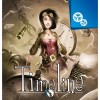




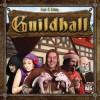

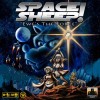

























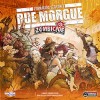




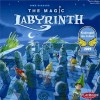





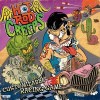
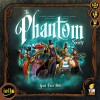
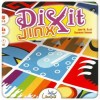








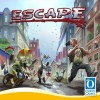
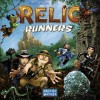






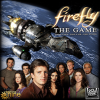
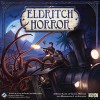







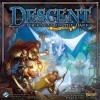





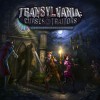






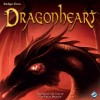






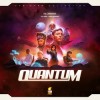










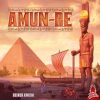
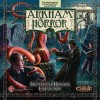














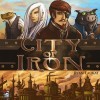


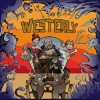

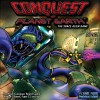

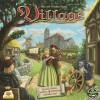



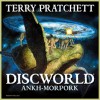


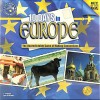




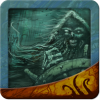

Star Trek: Catan
KEY POINTS:
-Typical Catan resource gathering and development game play, but with a nice speed boost and a strategy twist.
-Support cards add unique abilities that can be used to enhance the normal collecting/trading/building processes.
GAMEPLAY:
The gameplay is more or less identical in almost every way to the standard Settlers of Catan board game. You gather resources under new names: Dilithium = Wood/Lumber, Tritanium = Clay/Brick, Food = Sheep/Wool (lamb chops, anyone?), Oxygen = Wheat/Grain, & Water = Ore/Rock). Once you gather some resources, you can trade them in to build starships (roads), outposts (settlements), starbases (cities), or to buy a development card on your trek (sorry, I had to) for victory points. Hmm, they couldn’t think of a new term for a development card, it seems. Why not something like a Matter Conversion Distributer? Too lengthy to print on the building costs card? Ding, ding, ding! I think we have our answer.
New elements: “Support Cards” bring new life to this classic game and can speed up game play considerably, especially for veterans. Each player is provided with a support card that represents one of the characters from the Star Trek original series. Each has a unique ability that can be used up to two times (but only activated once per turn) before trading in for a new role. These unique abilities include some game-changing effects like forced resource trading, the ability to gain a resource card when rolls do not produce them, and 2-to-1 trading (without using a [port]).
Depending upon your familiarity with normal Settlers of Catan mechanics, these cards can provide a VERY powerful boost for the overall game speed as resources can be accumulated and used more efficiently. In a two-player game, for example, we found that the playing time was reduced by 10-20 minutes in a game with absolutely zero player-to-player resource trading. As a veteran of Settlers of Catan (mind you, only the base game with 5-6 player expansion), I found these abilities to be an AMAZING benefit for the game. Catan can (sometimes) seem to drag on if one or more players are not collecting the right resources or using them wisely. The support cards seem to negate that issue, which was my only element of grief with the first game. For strategy gamers, these cards can add a nice layer of strategy to this game, as players get to choose among the available support cards and can reap the related benefits.
COMPONENTS:
The board and card artwork really pops and is a welcome Trek-themed version that greatly differs from the classic Catan style. The cardboard components are similar in quality to the 4th edition of the Settlers of Catan game (relatively thin, but not terribly so). In lieu of the wooden settlements, cities, and roads, the game includes very fragile-looking plastic pieces (including a lovely Klingon ship as the Robber/Soldier). The starships, outposts/starbases are all placed on clear plastic bases to give you that “floating in space” effect, but this adds a considerable time to set up (at least initially). Be careful with these fiddly bits and they may last long enough to boldly go where several predecessors have gone before (though at a marginally higher altitude). Of course, if they do require a little patching up and someone complains, don’t miss the golden opportunity to loudly proclaim that you’re “a doctor, not a miracle worker!”
RULES:
The rules were not as logical and straight-forward as one might expect for a themed release of such a popular game. That being said, anyone familiar with the Settlers of Catan game play should have minimal need to reference the rules other than to review the mechanics of the support cards.
REPLAY FACTOR:
Star Trek Catan brings new life(forms) and new civilizations to an old favorite. While I was admittedly a bit skeptical of how much power Scotty could bring to the Catan game, I was greatly impressed by the themed modifications made and the enhancements the support cards provided. They boldly take the old classic Catan to new places!
PROS:
-Classic Catan-style turn play with simple mechanics and dice rolls.
-Support cards add new game play options and some mild strategy.
-Space-themed, eye-catching artwork.
-Easy for Catan veterans to pick up.
-Attracts Star Trek fans (if they aren’t gamers already, this might do it).
-Game plays a faster due to support cards. Warp speed!
CONS:
-Rules book could use some maintenance.
-Plastic pieces may need hull reinforcement or a good repair crew over time
-No 5-6 player expansion available (yet)
-No tribbles (Yes, I was hoping they’d be worked in somewhere)
FINAL THOUGHTS:
Star Trek: Catan is a good re-themed version of an old classic. If you like Settlers of Catan and like or love space themes or Star Trek in any form, this game will deserve a place on your game shelves. While I would never consider selling the classic game, this version is definitely the preferred version for me. The game play is faster, the artwork is more energetic, and the support cards offer new options. For those reasons, I feel that this game is “Givin’ it all she’s got!”
Live long and prosper with resources in this game!